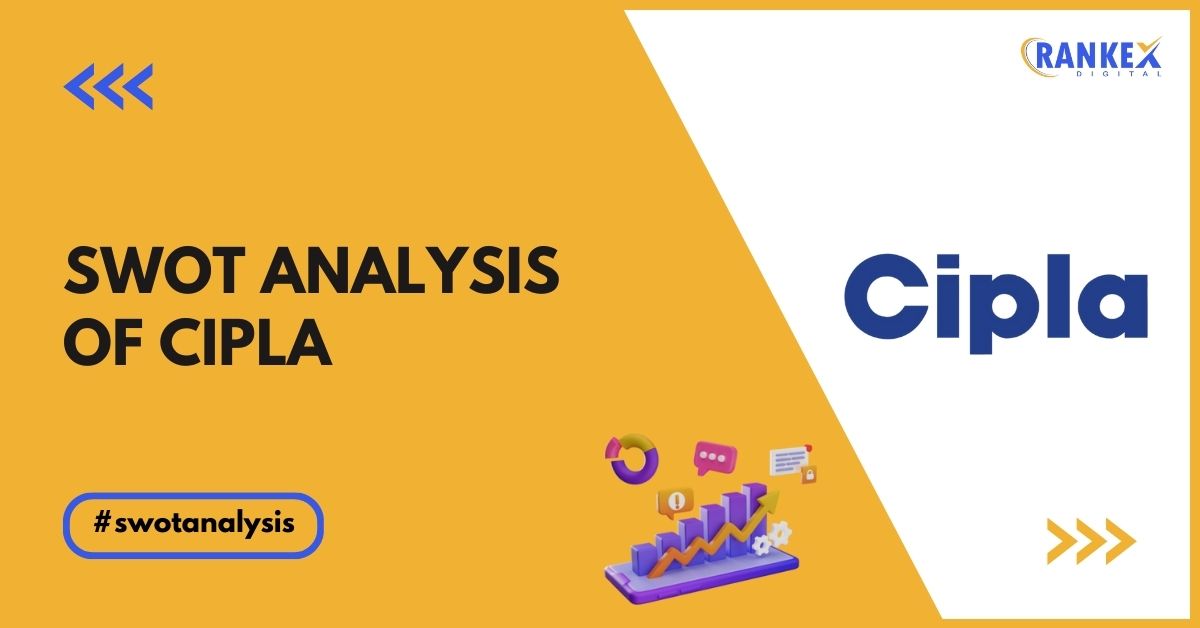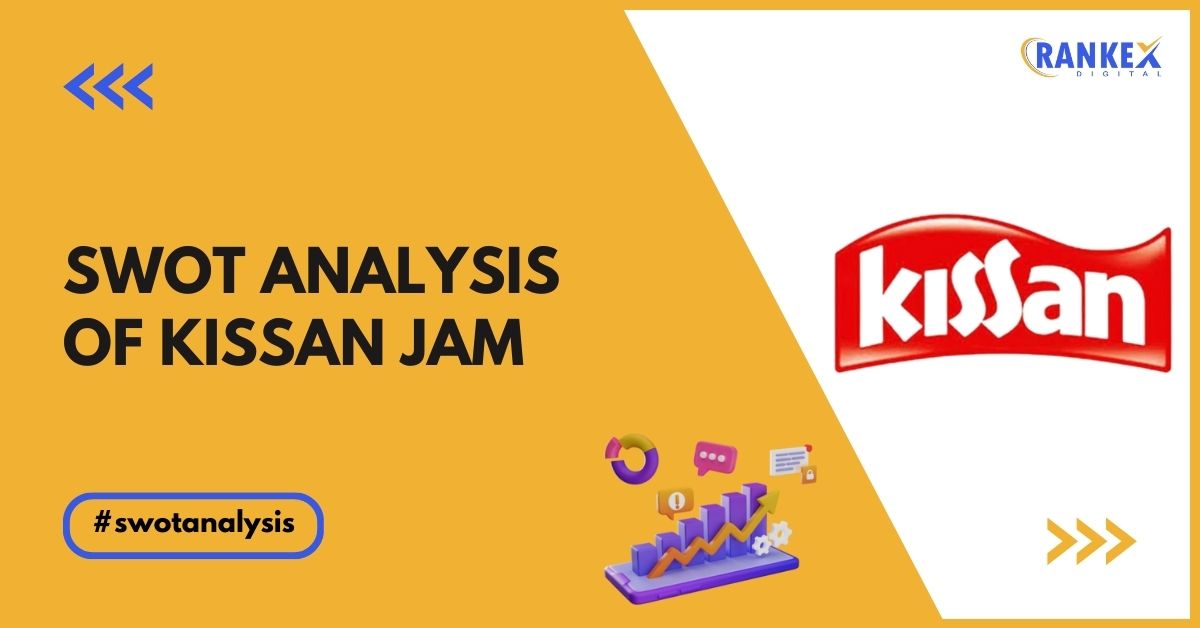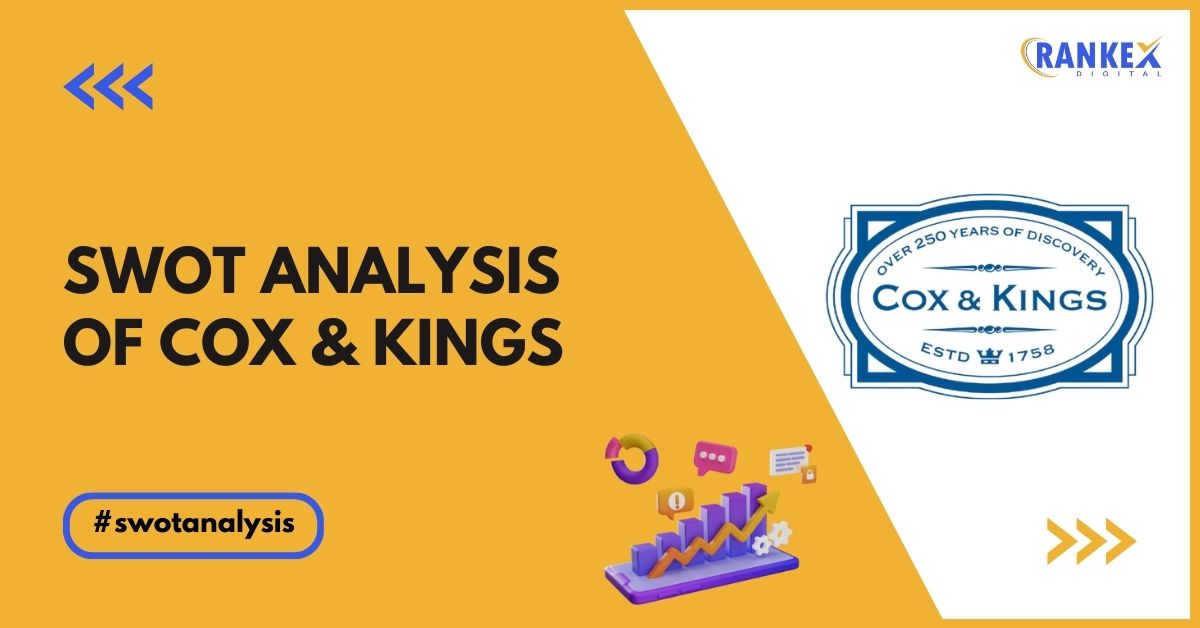Cipla Limited is one of India’s leading pharmaceutical companies, known for its commitment to providing high-quality, affordable medications across various therapeutic areas.
Established in 1935, Cipla has built a strong reputation in both domestic and international markets, making significant contributions to the global healthcare landscape.
This article presents a comprehensive SWOT analysis of Cipla, addressing common questions about its strengths, weaknesses, opportunities, and threats.
Table of Contents
Overview of Cipla
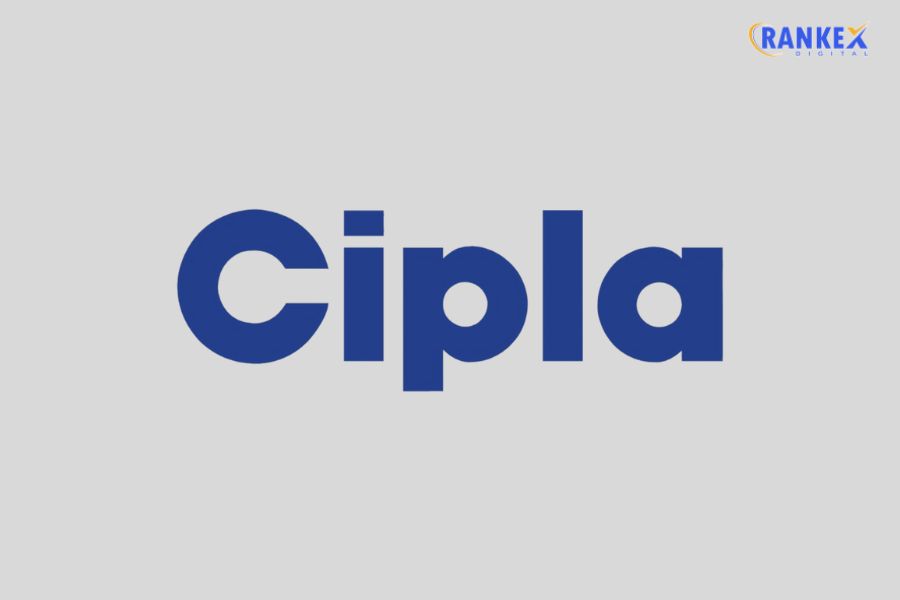
Cipla was founded with the vision of providing access to affordable medicines. Today, the company is headquartered in Mumbai, Maharashtra, and operates in more than 80 countries worldwide, offering a diverse range of pharmaceutical products, including generics, branded medications, and active pharmaceutical ingredients (APIs).
Quick Stats About Cipla
Here’s a table based on the information you provided:
| Attribute | Details |
|---|---|
| Founder | Dr. K. A. Hamied |
| Year Founded | 1935 |
| Origin | Mumbai, Maharashtra, India |
| No. of Employees | Approximately 23,000 |
| CEO | Umang Vohra |
| Company Type | Public |
| Market Cap | $10 Billion (as of 2025) |
| Annual Revenue | $2.5 Billion |
Current News of Cipla
- Innovative Drug Development: Cipla has been focusing on research and development to create innovative therapies for chronic conditions like asthma, diabetes, and cancer.
- COVID-19 Response: The company played a significant role during the pandemic by producing critical medications and vaccines.
- Global Expansion: Cipla is expanding its footprint in emerging markets and strengthening its presence in developed markets through strategic partnerships.
SWOT Analysis of Cipla
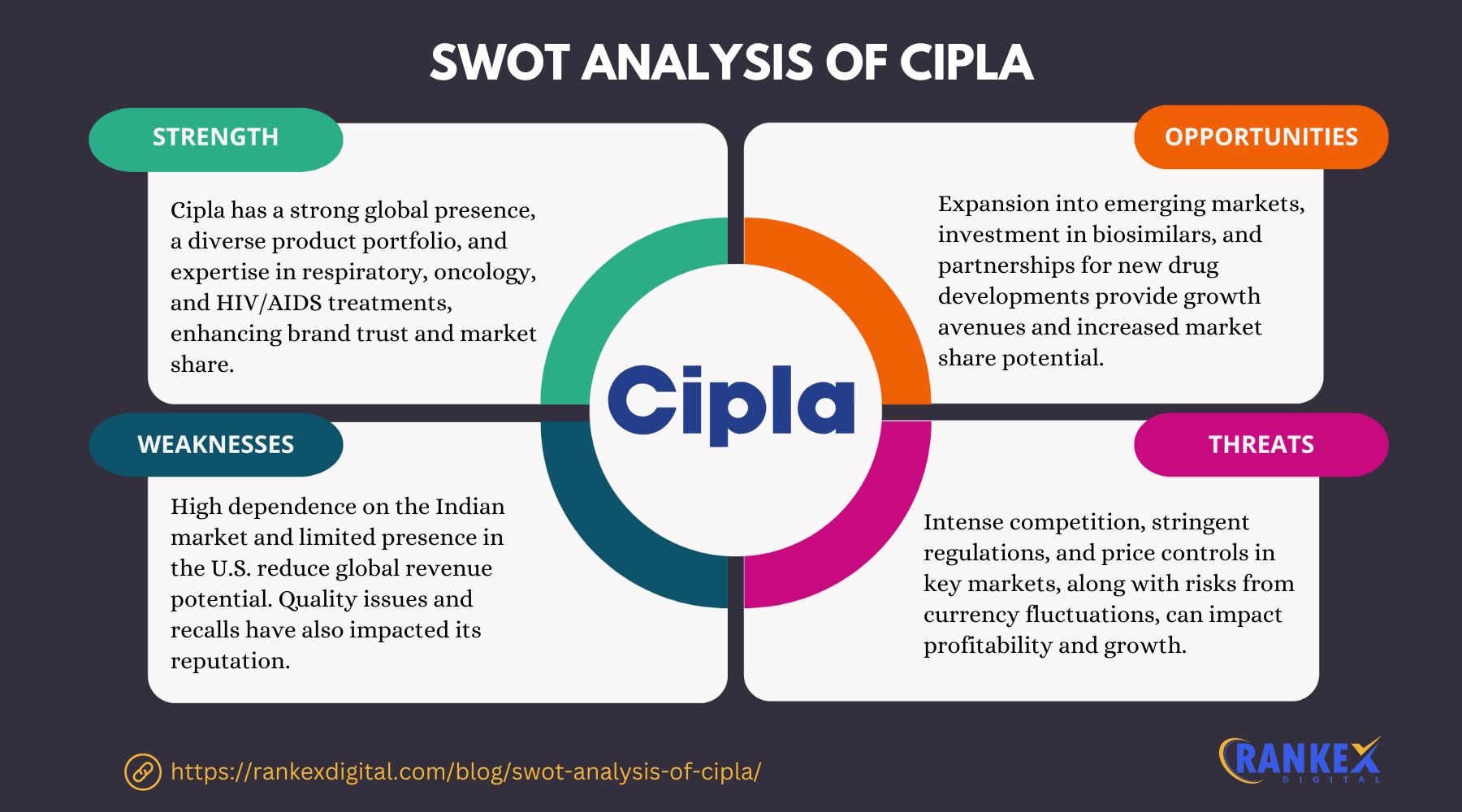
Strengths:
- Strong Brand Equity: Cipla has built a solid reputation in the pharmaceutical industry for over 85 years, known for its commitment to quality and reliable healthcare solutions. This brand strength is valuable, fostering trust among healthcare providers, regulators, and patients, which helps drive both customer loyalty and market credibility.
- Diverse Product Portfolio: With a broad range of products covering various therapeutic areas such as respiratory, cardiovascular, diabetes, and HIV/AIDS, Cipla is less dependent on any single product or treatment area. This variety enables the company to adapt to shifts in market demand and reduces revenue risk associated with any one category.
- Robust R&D Capabilities: Cipla invests heavily in research and development, allowing it to innovate in drug formulation and delivery mechanisms. This capability helps Cipla remain competitive in the industry and advance its portfolio with new or improved therapies, maintaining relevance and leadership in key therapeutic segments.
- Global Presence: Operating in more than 80 countries, Cipla has established a significant international footprint. This broad presence diversifies its revenue streams, reducing its reliance on any single market and mitigating risks associated with economic downturns in specific regions.
- Affordable Pricing Strategy: Cipla’s commitment to affordable medication makes healthcare more accessible, particularly in price-sensitive markets and developing regions. This strategy enhances brand loyalty and market penetration, positioning Cipla favourably against competitors who may focus less on affordability.
Weaknesses:
- High Dependency on Generics: A large portion of Cipla’s revenue is derived from generic medications, which are highly competitive and vulnerable to price pressures. This dependency can challenge the company’s profitability, especially in markets where other companies can manufacture and distribute generics at lower costs.
- Regulatory Challenges: With operations across multiple countries, Cipla faces a wide range of regulatory requirements. Each country’s rules and guidelines on drug approval, quality standards, and pricing create complexities that can impact operational efficiency, compliance, and overall costs.
- Limited Pipeline for New Drugs: Although Cipla has strong R&D, it is still seen as lacking in new drug launches relative to larger competitors. This limited pipeline can restrict future growth opportunities and competitiveness, as new drugs and patented therapies often drive higher revenue and profitability margins.
- Market Saturation in India: As the Indian pharmaceutical market becomes increasingly saturated, Cipla faces more competition domestically. This market saturation can constrain growth opportunities and make it difficult to increase market share in its home country.
Opportunities:
- Expansion in Emerging Markets: Emerging markets have a rising demand for affordable healthcare, which aligns with Cipla’s expertise in cost-effective medications. Expanding in regions like Southeast Asia, Africa, and Latin America can provide Cipla with substantial growth opportunities.
- Digital Health Initiatives: The growth of telemedicine and digital healthcare platforms represents an opportunity for Cipla to expand patient access and engagement. By incorporating digital health solutions, Cipla can offer new patient services and strengthen its brand in markets focused on technology-driven healthcare.
- Collaborations and Partnerships: Partnerships with biotech and research firms can enhance Cipla’s capacity to develop innovative therapies. These collaborations offer access to advanced technologies, new drug discoveries, and clinical research capabilities, facilitating faster development and market entry for new treatments.
- Increased Focus on Chronic Diseases: The prevalence of chronic diseases like diabetes, hypertension, and asthma is increasing globally. Cipla can capitalize on this trend by expanding its product lines in chronic disease treatment, thereby addressing a significant and growing healthcare need.
- Sustainable Practices: Embracing sustainable practices, such as eco-friendly manufacturing and reduced environmental impact, can boost Cipla’s brand reputation and appeal to environmentally-conscious consumers and investors. Sustainability can be a strong differentiator, especially in markets where regulatory bodies and consumers increasingly prioritize green practices.
Threats:
- Intense Competition: The pharmaceutical industry is highly competitive, with numerous global and local companies vying for market share. This competition can lead to pricing pressures and reduced profitability as firms strive to attract customers in both established and emerging markets.
- Regulatory Scrutiny: Increasing regulatory oversight in countries like the U.S., Europe, and even India poses challenges. Regulatory bodies may impose stricter compliance standards, leading to potential delays in drug approvals, increased compliance costs, and risks of penalties or restrictions.
- Price Control Regulations: Governments in many countries impose price controls on essential medications to keep them affordable for the public. Such price controls can limit Cipla’s pricing flexibility and profit margins, particularly in markets where price ceilings are more stringent.
- Supply Chain Disruptions: Global supply chains are increasingly vulnerable to disruptions caused by geopolitical conflicts, pandemics, and other crises. Cipla’s reliance on raw materials and manufacturing components from various regions can expose it to supply chain bottlenecks, impacting production timelines and costs.
- Rapid Technological Changes: The pharmaceutical industry is evolving quickly, driven by advancements in biotechnology, digital health, and personalized medicine. Keeping pace with these technological changes requires significant investment, and falling behind could limit Cipla’s competitiveness in the long term.
Conclusion
The SWOT analysis of Cipla reveals a company with strong brand equity, a diverse product portfolio, and robust R&D capabilities as its key strengths. However, it faces challenges such as high competition, regulatory hurdles, and a dependency on generic drugs.
Growth opportunities include expansion in emerging markets, digital health initiatives, and partnerships for innovative drug development. By addressing its weaknesses and mitigating potential threats, Cipla can continue to strengthen its position in the global pharmaceutical industry and contribute to improving healthcare access worldwide.
Frequently Asked Questions
What is Cipla known for?
Cipla is known for producing high-quality, affordable medicines across various therapeutic areas, including respiratory, cardiovascular, and diabetes medications.
When was Cipla founded?
Cipla was founded in 1935 by Dr. K. A. Hamied in Mumbai, India.
What are Cipla’s key strengths?
Cipla’s key strengths include its strong brand reputation, diverse product portfolio, robust R&D capabilities, global presence, and strategic partnerships.
What challenges does Cipla face?
Cipla faces challenges such as regulatory hurdles, pricing pressure, dependence on certain markets, and supply chain vulnerabilities.
What opportunities exist for Cipla’s growth?
Opportunities for Cipla’s growth include expansion into emerging markets, digital transformation, investment in biologics and biosimilars, and strategic acquisitions.

